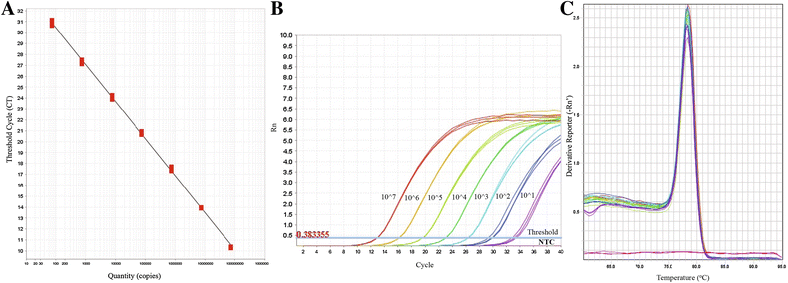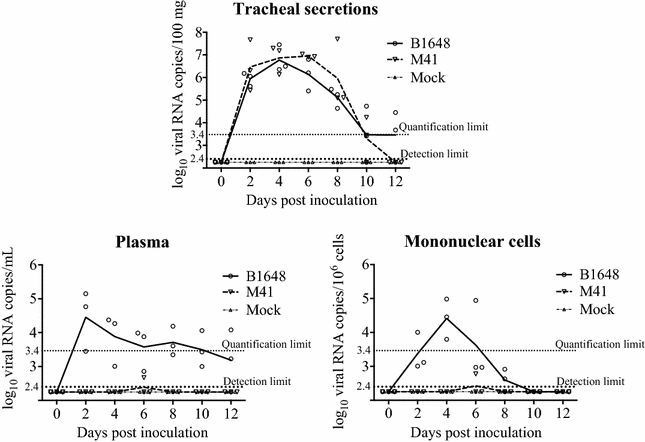Productive replication of nephropathogenic infectious bronchitis virus in peripheral blood monocytic cells, a strategy for viral dissemination and kidney infection in chickens
- PMID: 27412035
- PMCID: PMC4944500
- DOI: 10.1186/s13567-016-0354-9
Productive replication of nephropathogenic infectious bronchitis virus in peripheral blood monocytic cells, a strategy for viral dissemination and kidney infection in chickens
Abstract
In the present study, the replication kinetics of nephropathogenic (B1648) and respiratory (Massachusetts-M41) IBV strains were compared in vitro in respiratory mucosa explants and blood monocytes (KUL01(+) cells), and in vivo in chickens to understand why some IBV strains have a kidney tropism. B1648 was replicating somewhat better than M41 in the epithelium of the respiratory mucosa explants and used more KUL01(+) cells to penetrate the deeper layers of the respiratory tract. B1648 was productively replicating in KUL01(+) monocytic cells in contrast with M41. In B1648 inoculated animals, 10(2.7-6.8) viral RNA copies/100 mg were detected in tracheal secretions at 2, 4, 6, 8, 10 and 12 days post inoculation (dpi), 10(2.4-4.5) viral RNA copies/mL in plasma at 2, 4, 6, 8, 10 and 12 dpi and 10(1.8-4.4) viral RNA copies/10(6) mononuclear cells in blood at 2, 4, 6 and 8 dpi. In M41 inoculated animals, 10(2.6-7.0) viral RNA copies/100 mg were detected in tracheal secretions at 2, 4, 6, 8 and 10 dpi, but viral RNA was not demonstrated in plasma and mononuclear cells (except in one chicken at 6 dpi). Infectious virus was detected only in plasma and mononuclear cells of the B1648 group. At euthanasia (12 dpi), viral RNA and antigen positive cells were detected in lungs, liver, spleen and kidneys of only the B1648 group and in tracheas of both the B1648 and M41 group. In conclusion, only B1648 can easily disseminate to internal organs via a cell-free and -associated viremia with KUL01(+) cells as important carrier cells.
Figures









References
-
- Cavanagh D, Naqi SA. Infectious Bronchitis, vol 11. 11. Ames: Iowa state press; 2003.
Publication types
MeSH terms
Substances
LinkOut - more resources
Full Text Sources
Other Literature Sources
Medical

